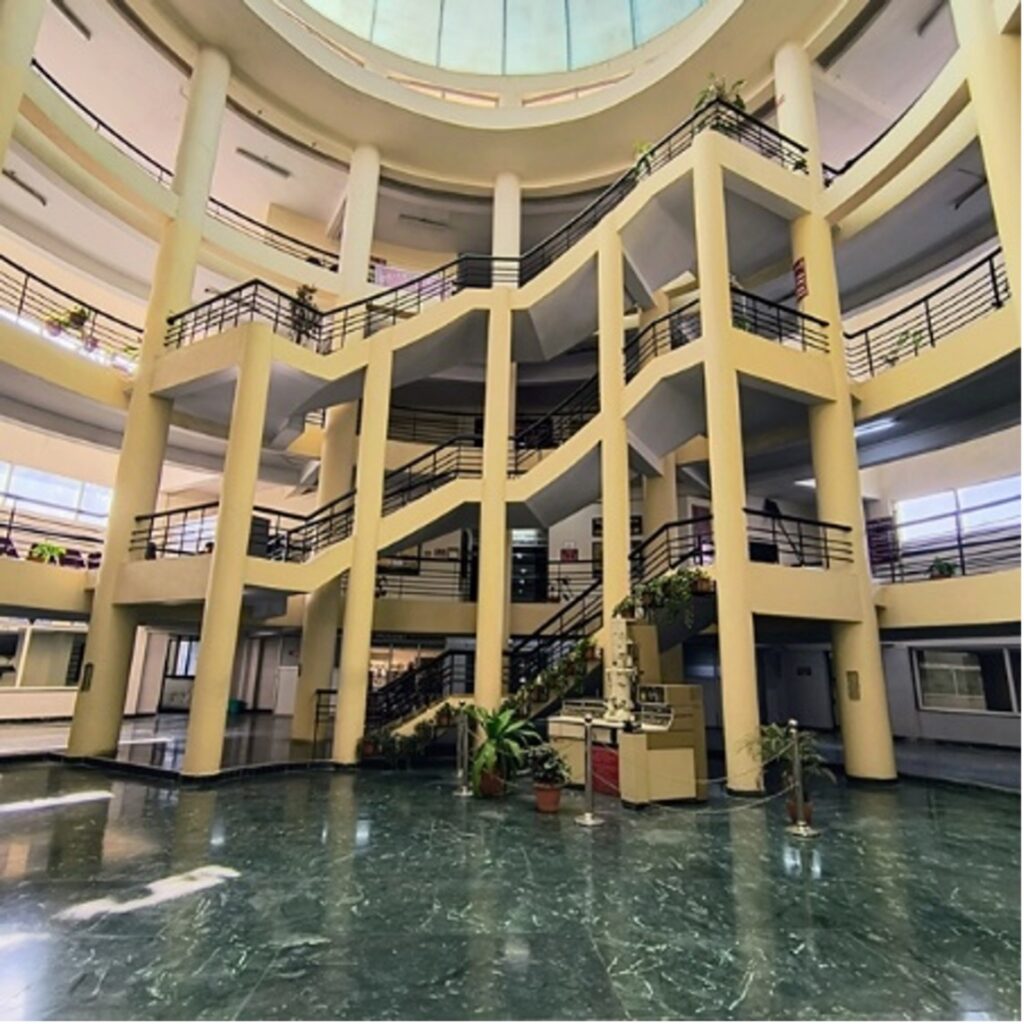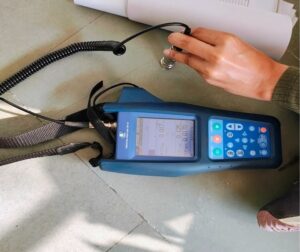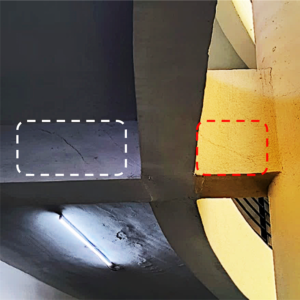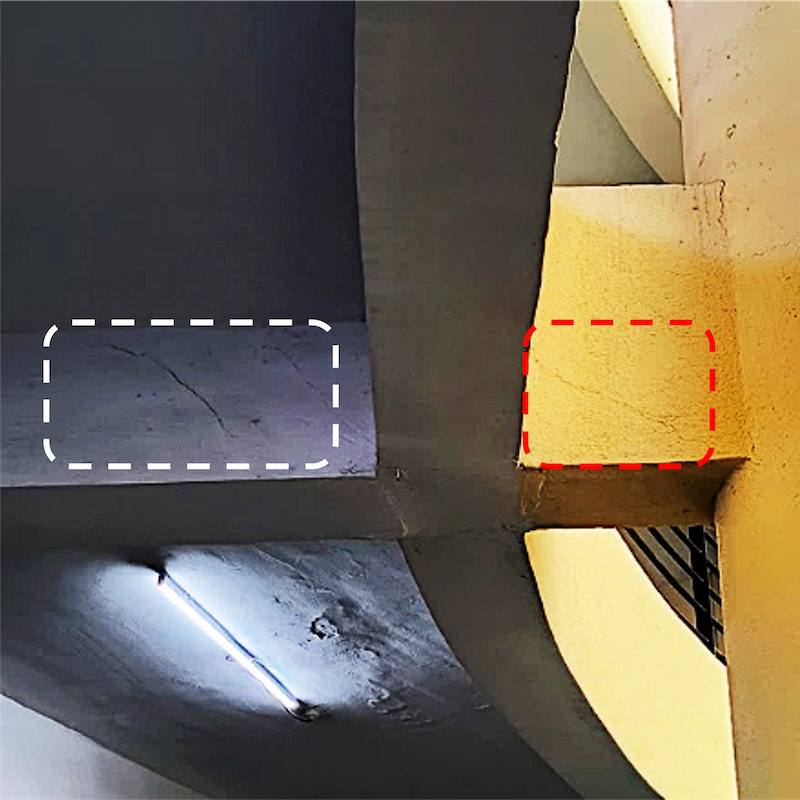When structures speak: How vibration monitoring revealed a hidden weakness
Case Study
Dr. Sauvik Banerjee, Co-founder & Director, Nirixense Technologies (August 2025)
In the world of modern infrastructure, persistent vibrations are more than a nuisance. They’re often a sign of deeper structural issues. This short article describes how vibration monitoring in an institutional building uncovered a stiffness deficiency in a circular foyer slab system, and how a targeted intervention helped address the root cause before it escalated.
The problem:
Occupants of a multi-story institutional building reported noticeable vibrations in a circular foyer area connected to staircases across three floors. The design featured long-span, semi-circular slabs supported by circular exterior columns but lacked critical end-span beam connections. Cracks in some beams raised concerns about structural integrity and shear capacity.

The investigation:
A focused vibration monitoring effort was conducted, with following objectives:
- Record vibration signals in the affected zones.
- Compare slab frequencies with human-made vibrations due to footsteps.
- Diagnose possible causes like low stiffness or support deficiencies supported by full-scale modelling.
What was found:
- The natural frequency of the slab was approximately 5Hz. This is close to frequencies caused by foot traffic, creating noticeable but non-resonant vibrations every time people moved through it.
- Persistent vibrations were observed, implying that factors such as stiffness of the slab may be influencing the sustained oscillations.
- Absence of beam connections and cracks in existing beams showed deficiencies in shear capacity and inadequate damping, thus amplifying vibrations.


Solution:
The root cause was identified to be inadequate stiffness. Instead of major repairs, carbon-fiber reinforcement plates were recommended to enhance stiffness and reduce vibrations in the structure.
Learnings for facility managers, architects and builders
- Proactive testing prevents small issues from becoming major structural problems.
- People feel safer and happier in buildings that don’t shake.
- New, smart fixes like carbon-fiber reinforcing save time and money.
Vibration monitoring is a smart, preventative way to spot and fix hidden weaknesses in buildings, protecting both comfort and safety.
© 2025 Nirixense Technologies Pvt. Ltd. All rights reserved. email: connect@nirixense.com
About the Author: Dr. Sauvik Banerjee is Co-founder & Director at Nirixense Technologies, and Professor at Department of Civil Engineering, IIT Bombay. His experience includes structural health monitoring, using wave propagation and vibration-based approaches, quantitative nondestructive evaluation of structures, nondestructive testing, modelling of advanced composite structures, structural retrofitting and impact response of structures. He obtained Ph.D. degree from UCLA (Mechanical Engineering, 2003), M.Tech. from IIT Bombay (Civil Engineering, 2001).
Note: This article presents the author’s personal views and insights drawn from publicly shareable aspects of research and consultancy projects conducted as a faculty member at IIT Bombay. The content is intended solely for thought leadership and knowledge sharing. The views expressed do not necessarily represent those of IIT Bombay.


